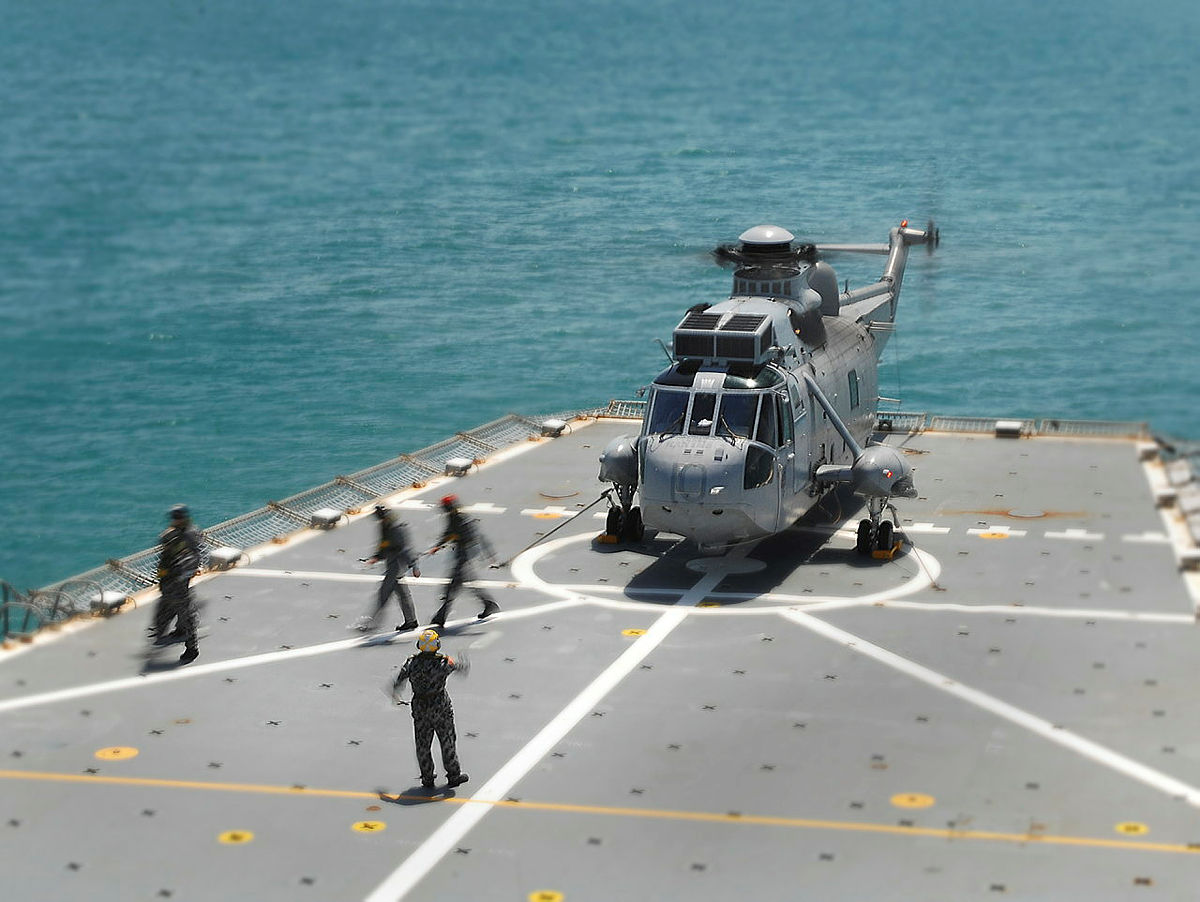- Author
- A.N. Other
- Subjects
- Naval Aviation
- Tags
-
- RAN Ships
- 817 Squadron, HMAS Melbourne II, HMAS Sydney III
- Publication
- December 2011 edition of the Naval Historical Review (all rights reserved)
The operational history of HS817 Squadron (which in 2001 again became 817 Squadron) with the Sea King is extensive. In this capacity the squadron has seen active service in East Timor and the Arabian Gulf and served in numerous other operational areas including Somalia, Bougainville and the Solomon Islands. 817 Squadron and the Sea King have also played a vital operational role in various major public events which have included the Sydney 2000 Olympic Games, and the 2006 Melbourne Commonwealth Games. The Sea King has participated in many multinational military exercises which have included the KANGAROO, TANDEM THRUST and TALISMAN SABRE exercises and has also regularly participated in the RIMPAC biennial exercises held in Hawaii. 817 Squadron has also become central in RAN ceremonies and has regularly been seen flying flags for more than 20 years at events such as the RAN’s 75th anniversary commemorations in 1986, Australian Bicentennial celebrations in 1988 and most Australia Day celebrations over Sydney Harbour.

Throughout the 1990s, 817 Squadron performed a number of civil aid tasks exemplifying the Sea King’s value as a utility aircraft. In April 1990, Sea Kings deployed to Dubbo in NSW to assist in flood relief operations around Nyngan. Early in 1992 the Squadron was supporting fire crews fighting bushfires around Nowra and barely four months later were again involved in flood relief operations in the same area. The Sea Kings were in fact the first ADF helicopter to test and utilise water bombing buckets and 817 Squadron employed these buckets to fight fires during the devastating fires in NSW in 1994. The success of the 817 Squadron’s fire fighting efforts in 1994 meant that the Sea Kings have continued to be utilised in that role, most notably in 1998 on largely inaccessible bushfires on the NSW-Victorian border and again in 2002 and 2003 in Southern NSW and the ACT.
The Search and Rescue capability of the Sea Kings is well known and has been utilised on numerous occasions over its 35 years of service. SAR missions carried out by 817 Squadron have included the ill fated 1998 Sydney to Hobart Yacht Race when the crew of Sword of Orion was rescued at night in huge seas and more recently the squadron participated in two long range SAR operations to Lord Howe Island. The first was to assist in the rescue of a stricken yachtsman in 2007 and the next was in 2011 to rescue an injured hiker from Mount Gower.
On 2 April 2005 disaster struck 817 Squadron when it lost one of its Sea Kings during Operation ‘Sumatra Assist 2’, a relief operation providing assistance to the people of Indonesia following the devastating earthquakes of 28 March 2005. The Sea King (call-sign ‘Shark 02’) launched from HMAS Kanimbla in response to a report that villagers in Amandraya on the island of Nias were in urgent need of medical assistance. The aircraft had on board a full crew and Air Medical Evacuation (AME) team and concerns were raised when communications were lost between it and another Sea King operating in the area, call-sign ‘Shark 21’. Sadly, Shark 21 subsequently reported that Shark 02 had crashed at the village of Amandraya. Nine of the Sea King’s crew were killed in the crash and two others were seriously injured. This was a devastating blow to the close-knit 817 Squadron and Naval Aviation community.
Since this sad event 817 Squadron has re-focused and continued to provide valuable aviation support to ADF operations and exercises. On 30 September 2009, the region around Padang on the Indonesian island of Sumatra was devastated by a 7.6 magnitude earthquake killing over 1,000 people and destroying the homes and livelihoods of hundreds of thousands. Two Sea King helicopters, their crews and maintainers embarked in HMAS Kanimbla on 6 October 2009 to contribute to Operation PADANG ASSIST, the Australian response to the disaster. The Sea Kings were used for aerial reconnaissance, transport of shore parties and equipment, and remained on standby for medical evacuation. Kanimbla arrived back in Australia on 5 November 2009.
The Squadron was again called into action very recently to provide assistance in a disaster zone, on this occasion within Australia, when Queensland and northern New South Wales were devastated by flood waters at the beginning of 2011. At 3.00 am on 11 January, the crews of the Joint Task Force’s two Sea Kings, Shark 21 and Shark 22, began preparations to fly from Oakey Air Base to RAAF Base Amberley to assist with evacuations in the Lockyer Valley. Over the course of the day, the two aircraft rescued nearly 200 people from the rapidly rising flood waters.




